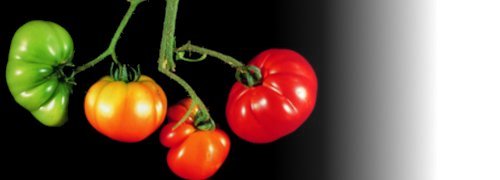Fig 5.14.jpg

Figure 5.3 Photoassimilate distribution in a rooted cutting of Washington Navel orange (mounted specimen shown on left; matching autoradiograph on right). 14CO2 was supplied to source leaves (boxed area top left) for a day, and movement of 14C-labelled assimilate followed by autoradiography of harvested plant material. 14C photosynthates were distributed widely via vascular conduits to sinks including some roots and a fruit on an adjacent shoot (note stem labelling between sources and sinks). Nearby mature leaves failed to import; they were additional sources of photosynthate. Scale bar = 2 cm (Unpublished material courtesy P.E. Kriedemann)
Photoassimilate transport to harvestable organs plays a central role in crop yield brought about by greater harvest indices. This raises questions about transport and transfer processes that collectively influence photoassimilate partitioning between competing sinks.
Historically, these questions were elucidated by observing partitioning patterns of photoassimilates exported from specified source leaves labelled with 14C supplied as a pulse of 14CO2. Following a chase period, in which 14C photoassimilates are transported to and accumulated by recipient sink organs, the plant is harvested. The pattern of photoassimilate partitioning operating during the pulse is deduced from 14C activity accumulated by sinks (Figure 5.3).
Photoassimilates are partitioned from source leaves to sinks in characteristic and reproducible patterns. For instance, in a vegetative plant, lower leaves are the principal suppliers of photoassimilate to roots, whereas upper leaves are the principal suppliers to the shoot apex. Leaves in an intermediate position export equal quantities of photoassimilates in either direction. However, the pattern of photoassimilate partitioning is not static, it changes with plant development. In vegetative plants, the direction of flow from a leaf changes as more leaves above it become net exporters. Furthermore, at the onset of reproductive development, growing fruits or seeds become dominant shoot sinks for photoassimilates at the expense of vegetative apices.
Photoassimilate partitioning patterns can be altered experimentally by removal of selected sources (e.g. leaves) or sinks (e.g. fruits). These manipulative experiments demonstrate that photoassimilate partitioning reflects the relative strengths of individual sources and sinks. Properties of the phloem pathway connecting sources with sinks are shown in the following Section 5.2.
